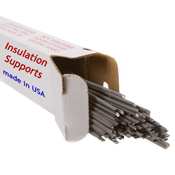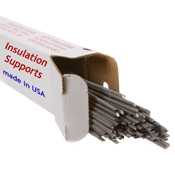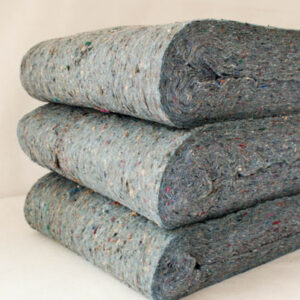Insulation Supports for Quiet Batt® Insulation
Soundproof Cow Quiet Batt® Insulation Supports are the perfect complement to your Quiet Batt® Soundproofing Insulation. Available in 16-inch and 24-inch sizes, Quiet Batt® Insulation Supports provide a fast and easy way to secure your Quiet Batt® Soundproofing Insulation sheets between stud wall assemblies and floor joists.
These steel supports install securely and easily with a friction fit with no tools required. If you’re struggling with securing your Quiet Batt® Soundproofing Insulation, or you don’t have a plan yet for your soundproofing installation, these quality, durable supports are your answer. They are affordably priced in cases of 100. Order supports for your Quiet Batt® Soundproofing Insulation today!
Using Soundproof Insulation for Ceilings
Ceilings are common pathways for unwanted noises, especially in multi-story buildings. Acoustic sound insulation can be installed between ceiling joints to address two main types of noise:
- Airborne noise: You can use ceiling insulation for noise, like voices or television, which travel through the air. Installing soundproofing insulation between joints helps absorb and dampen these noises, improving the acoustic comfort of the room below.
- Impact noise: Footsteps, moving furniture or dropped objects create impact noise. While insulation for sound reduction can help minimize the intensity of impact noise, the best results are achieved when combined with other treatments like underlayment upstairs or a fully decoupled ceiling assembly.
Installation Best Practices
Proper installation is essential to maximize the effectiveness of soundproofing insulation for walls and ceilings. Follow these best practices to ensure optimal noise reduction and energy efficiency:
- Gather tools: You will need a tape measure, straight edge, marker, utility or bread knife. A vapor barrier may also be necessary for installing sound absorbing insulation on exterior walls.
- Measure and plan: Accurately measure the wall or ceiling cavities where you will install the insulation using a tape measure, straight edge and marker.
- Cut to size: Use a sharp utility knife to cut the acoustic sound insulation to fit the height of each wall cavity. The insulation should fit snugly without being compressed.
- Friction fit: Place the insulation between wall studs, ensuring it fills the entire cavity. Quiet Batt® Soundproofing Insulation is designed for a tight friction fit, so no adhesives or fasteners are typically needed.
- Use insulation supports: Use Quiet Batt® Insulation Supports to hold the insulation securely. They allow you to easily push the noise insulation for walls and ceilings into place.






